Surveys
This section includes posters developed by L10K that are not confidential and which may be distributed. You'll need the free Adobe Acrobat Reader program to view the PDF files on your computer.
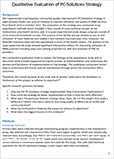 Qualitative Evaluation of PC-Solutions Strategy
Qualitative Evaluation of PC-Solutions Strategy
L10K implemented a participatory community quality improvement (PC-Solutions) strategy in eight primary health care units of Ethiopia to improve utilization and quality of MNH services. The evaluation of this strategy was conducted using quantitative methods. The analysis of the facility surveys showed access to and utilization of most maternal and newborn interventions improved over time. The analysis of the quasi-experimental study showed significant intervention effects for improving utilization of MNH practices including early care seeking of women for ANC and provision of PNC by providers. (2018)
Between October 2015 and September 2017, L10K 2020 supported the health systems of 115 rural districts of Amhara, Oromia, Southern Nations, Nationalities and Peoples’ [SNNP], and Tigray regions, covering 17 million people, to implement the HSTP transformation agendas—woreda transformation, quality and equity of health services; caring, respectful and compassionate care; and information revolution. This study monitors the changes in the maternal and newborn health (MNH) care behavior and practice indicators during the first two years of L10K 2020 project. (2018)
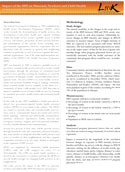 Summary of Midterm Survey Results: Impact of the HEP on Maternal, Newborn and Child Health
Summary of Midterm Survey Results: Impact of the HEP on Maternal, Newborn and Child Health
The paper looks at the impacts made by the Health Extension Program (HEP) on maternal, newborn and child health in four of the most populous regions of Ethiopia (namely: Amhara, Oromia, SNNPR and Tigray). The document looks at the impacts made between 2008 and 2010. (2011)
The paper presents the results of the midterm survey conducted by the Last Ten Kilometers project (L10K) in 2010. The study looks at changes in maternal and newborn health, between 2008 (when it conducted its baseline survey) and 2010, in all four of the L10K project regions. (2011)
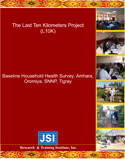 Baseline Household Health Survey: Amhara, Oromiya, SNNP, Tigray - August 2009
Baseline Household Health Survey: Amhara, Oromiya, SNNP, Tigray - August 2009
The Baseline Household Health Survey Report presents survey results that describe the availability, perceived quality, awareness, knowledge, demand, access, and utilization of the reproductive, maternal, neonatal, and child health (RMNCH) services in L10K project areas. The report is the first-of-its-kind to describe the neonatal health care practices in rural Ethiopia. The survey was conducted during the period of December 2008–January 2009 and gathered information from 204 communities, or kebeles, and 6,277 women using a two-stage cluster sampling methodology. Implications of the survey findings for the health extension program of the Ethiopian Government are also discussed. (2009)
 Baseline Household Health Survey Report Summary
Baseline Household Health Survey Report Summary
Summary of the 2009 Baseline Household Health Survey Report. (2009)
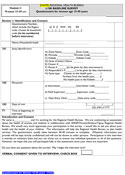 Baseline Household Health Survey Questionnaires (2008)
Baseline Household Health Survey Questionnaires (2008)
Four types of questionnaires were used during the baseline survey conducted by the Last Ten Kilometers Project (L10K) in 2008. Each one was crafted for different groups of interviewees:
Questionnaire for women aged 15 to 49;
Questionnaire for women with children aged 0 to 11 months;
Questionnaire for women with children aged 12 to 23 months; and a
Community Questionnaire for Health Extension Workers.
For detailed data regarding the results from the questionnaires, please contact us via email.

 Maternal and Newborn Health Care Behaviors and Practices in 115 L10K Districts of Ethiopia: Baseline and Follow-Up Surveys 2016-2017
Maternal and Newborn Health Care Behaviors and Practices in 115 L10K Districts of Ethiopia: Baseline and Follow-Up Surveys 2016-2017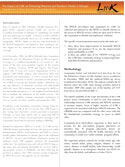 Summary of Midterm Survey Results: Impact of L10K on Enhancing Maternal and Newborn Health in Ethiopia
Summary of Midterm Survey Results: Impact of L10K on Enhancing Maternal and Newborn Health in Ethiopia